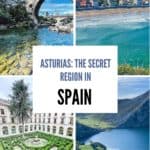Taste the green side of Spain with this Asturias road trip through the vivid peaks and crashing coast of the north. This itinerary also combines well with a road trip through Galicia.
See also the best road trips in Spain and don’t miss this guide on what to eat in Asturias.
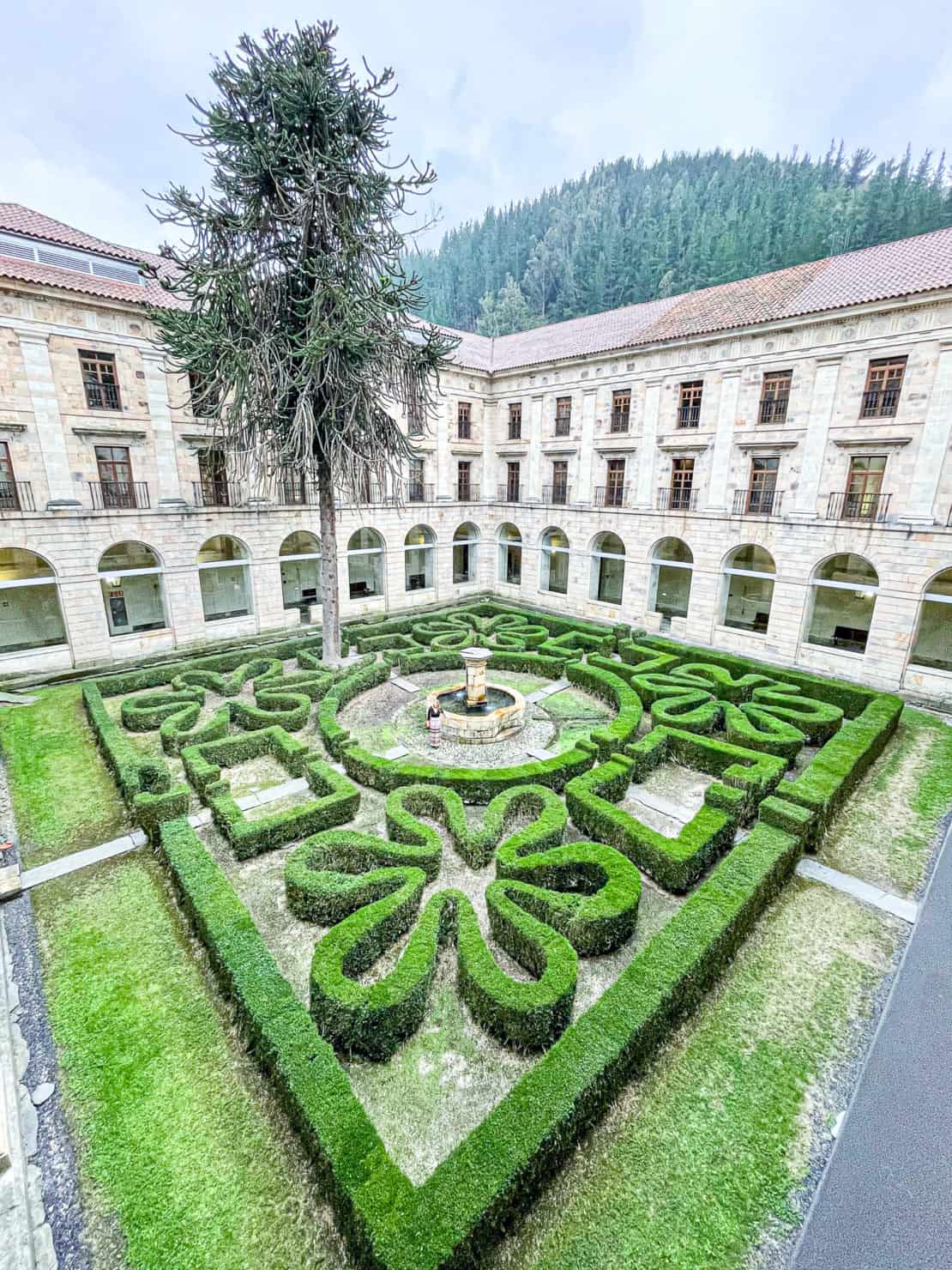
Why plan an Asturias road trip?
Asturias is still a hidden gem in Europe. An almost fairytale place where green cloaked mountains crash into the Cantabrian Sea. It’s a place for adventurers, with hiking paths, nature reserves, deserted coves, medieval villages and secret crypts riven into the rock.
All combined with an unmistakable identity. A place where cider sits next to tapas and hearty fadeba stews fire up the hearts of locals.
It’s a place that surprises me each time I visit. A place of natural beauty, yes, but also history at the heart of modern Spain. It helps, too, that it has some great spas and gorgeous hotels.
The winding roads and secret locations mean that the best way to explore the place is by car. So, I’ve gathered together the perfect itinerary for you to plan your Asturias road trip.
Disclosure – I last travelled to Spain in partnership with Green Spain and Traverse as part of the #inGreenSpain project. As ever, as always, I kept the right to write what I like. Otherwise, there’s just no point. Also, if you book or buy through any of the links on this page, we may earn a small affiliate commission at no extra cost to you Thank you!
What is Green Spain?
The autonomous region of Asturias is part of the “Green Coast”, a name given to an area that includes Cantabria, Galicia, Asturias and the Basque Country.
Not only green by nature, it’s green by development, too, with an eye on sustainability and a dislike of mass resorts. This Asturias road trip is designed for those who need a week far from the big cities, to inhale the air of the forest and get in touch with their inner selves again.
How to use this Asturias Road Trip Itinerary
If you’ve decided to go on a road trip through Northern Spain, you have two realistic options. Either rent a car and enjoy the freedom. Or book a guided tour and enjoy the stress free flow of knowledge.
I’ve travelled to Asturias a few times, now, and this itinerary is loosely based on my last trip, with a few tweaks here and there. If you’re a keen hiker, slow this down to a seven day itinerary, and give yourself more time on the trails.
You can follow it as an independent traveller or use it for inspiration to book onto a guided trip.
Ready for a new adventure? Let’s take a look at this Asturias Road Trip.
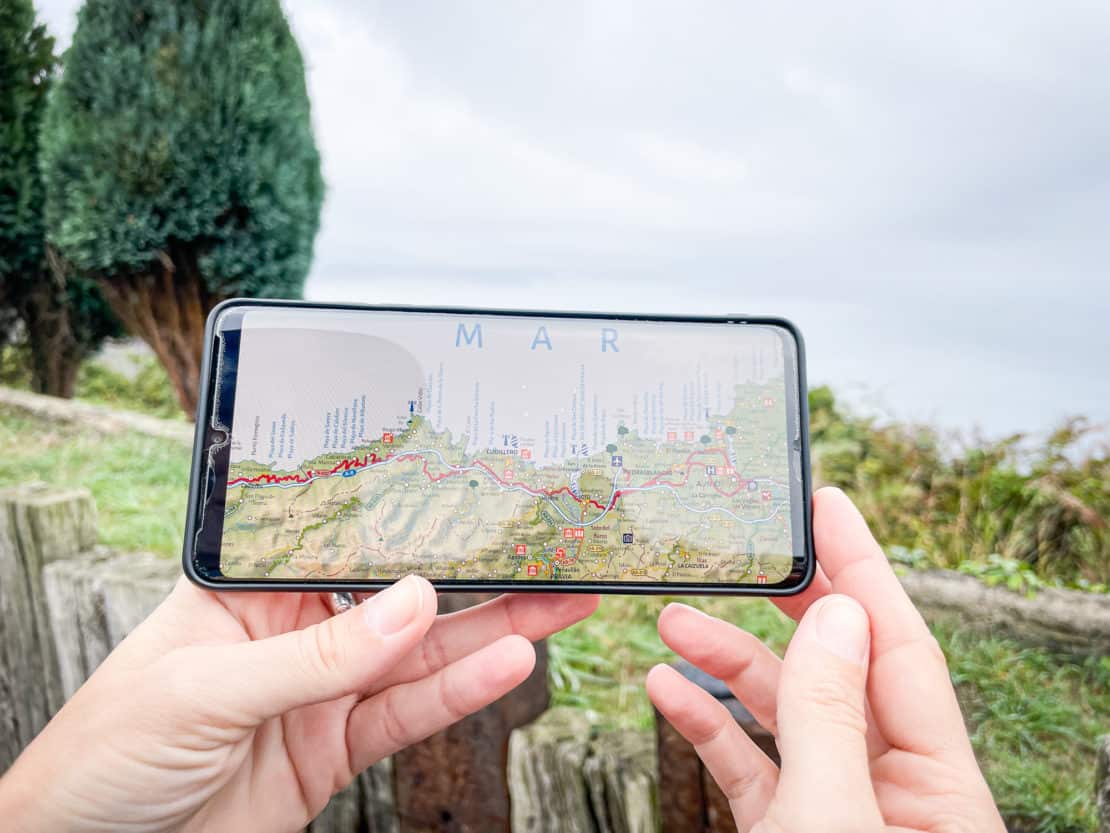
How to Get to Asturias
There are three main ways to reach this part of Spain: plane, bus, and train.
By Air
The easiest way to arrive in Asturias is by plane. The main airport (OVD) receives direct flights from Paris, Barcelona, Madrid, and London, and from here, there’s only a short drive to San Esteban de Pravia, where your road trip begins.
By Bus
If you land in Madrid, one of your best options to reach Asturias is to take the bus. It is a cheap way of travelling, but you must be prepared to spend 5 hours on the road even before your trip begins.
By Train
Travel more comfortably from Madrid by train. Although the prices are higher, this route offers beautiful views that make up for it and Spanish trains are very comfortable.
By Car
Of course, you could start your road trip through Asturias right away if you land in Madrid or Barcelona. Rent a car and enjoy some of the best road trips in Spain.
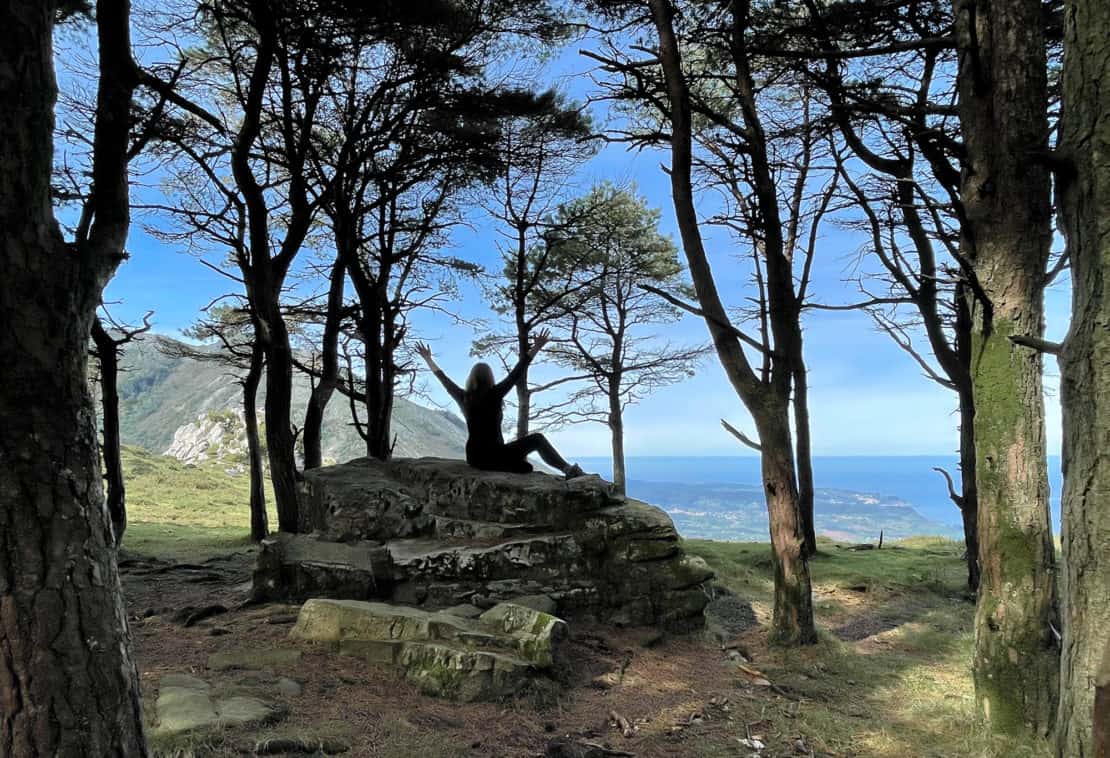
How to Get Around Asturias
Asturias has small towns and villages, so you can simply walk or take a taxi or bus if your legs are too tired. Typically, the most you would pay for a taxi to get you from one side of a town to another is around £7.
Travelling between towns and villages is also simple and cheap, with buses departing every day early in the morning and running up to 11 PM. Trains are available, but it is more difficult to create an itinerary based on their schedule since there are not too many options.
Really, your best bet for independent travel in Asturias is to have your own wheels. Which is why most of this article is based on an Asturias road trip.
If you choose a tour, this is no longer your problem, of course, as the tour company will be in charge of the transfer services.
- Recommended reading: how to plan a road trip by yourself
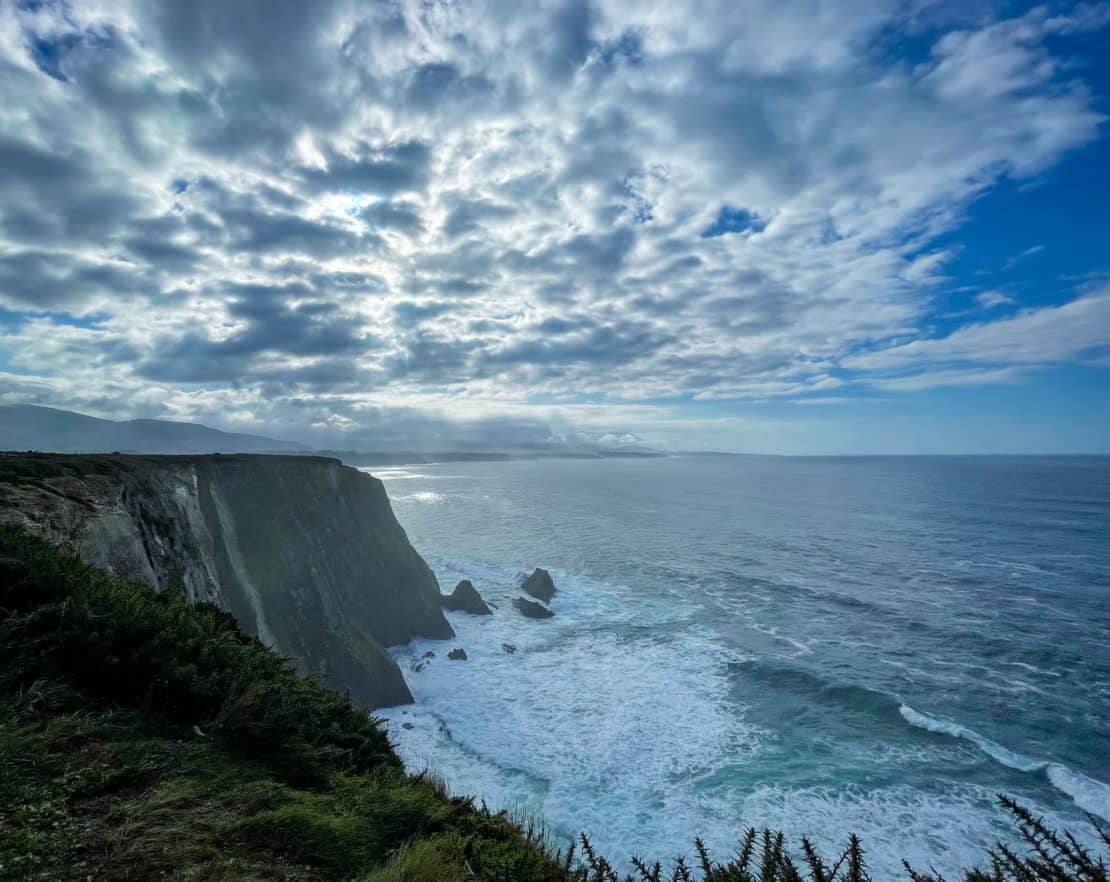
Day 1: Arrive in Asturias
Your Asturias road trip begins at the airport with a quick transfer to San Esteban de Pravia. Either join your tour or pick up your rental car and start the 20 minute journey.
San Esteban de Pravia
This picturesque small town was once one of the most active on the peninsula due to its coal port, the first in Spain, which helped San Esteban’s economy to grow. Today, the loading docks and cranes are no longer used, but they stay in place as huge artefacts of what this port used to be, lending a certain nostalgia to the whole place.
Here, the longest river in the region, El Nalon, meets the Cantabrian Sea. Unsurprisingly, this results in great fresh fish and seafood, with monkfish a highlight.
San Esteban de Pravia is the starting point for the breathtaking Route of the Viewpoints, and this makes it the best place to start your Asturias itinerary.
Where to Stay in San Esteban de Pravia
El Gran Hotel Brillante – this fabulous hotel has spacious rooms and the best view over the sea. It recently went through an extensive renovation, so everything is brand new. The food is also great and traditional and the staff are friendly and helpful. Check availability for El Gran Hotel Brillante here.
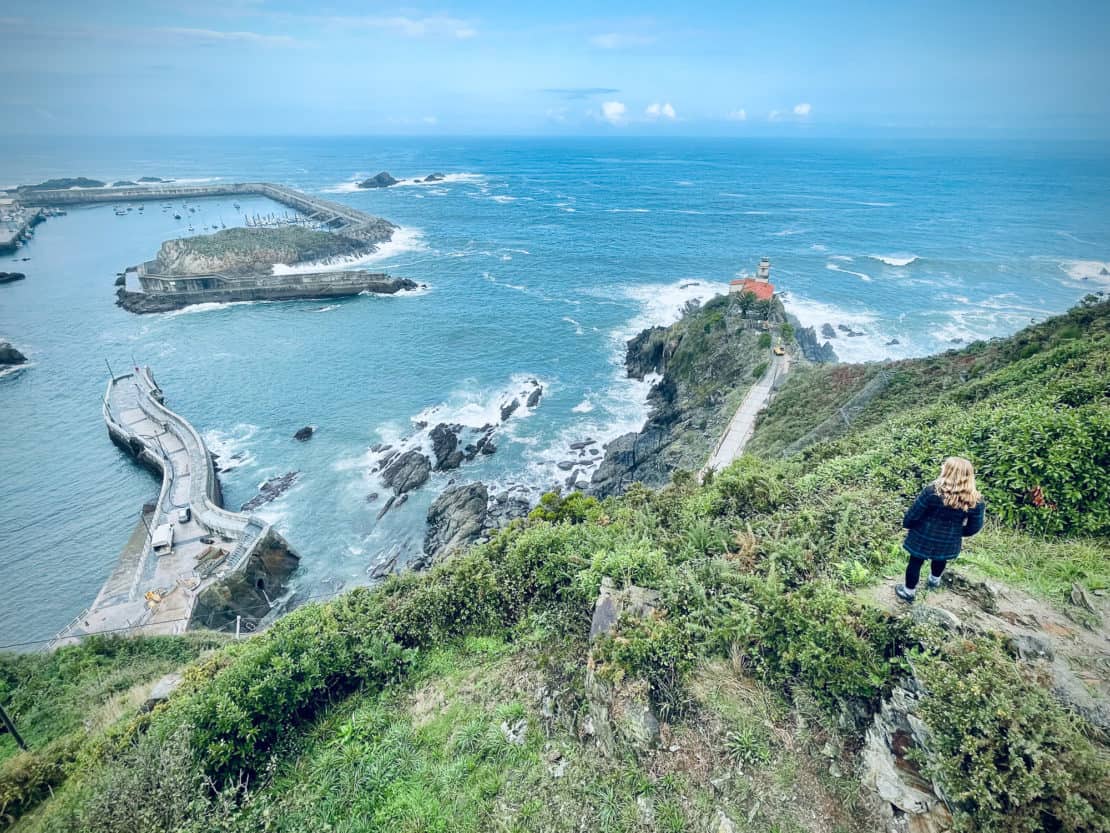
Day 2: San Esteban de Pravia – Senda de los Miradores – Cudillero – Cadavedo – Cangas de Narcea
The second day of your Asturias itinerary takes you along the Nolan River to discover a stunning landscape with pine and eucalyptus groves, gorgeous viewpoints, and wild beaches. Lace up those hiking boots for a mild to moderate day on the trails.
Hermitage of the Holy Spirit
Start your day at Mirador del Espíritu Santo in San Esteban. The small chapel is situated on the highest point of the coastal path of Muros de Nalon and offers a stunning view over the Bay of Biscay. It is often used for weddings since it is easily accessible by road.
Senda de los Miradores: Hike the path of the viewpoints
From the chapel, your hike continues along the Senda de los Miradores, the path of the viewpoints. It travels along the coast of the Cantabrian Sea, through a portion of the Bajo Nalón region amid wild beauty and luxuriant forests. The Senda de los Miradores takes you further to the beaches of Focarón and Los Espinos, surrounded by the majestic mountain range of the Pico de Europa, sometimes shrouded in mist.
Prepare to breathe the freshest air in Europe as you cross the pine and eucalyptus forests to a calm rest area where you can have a sandwich and some tea and enjoy the scenery before getting ready to explore the Atalaya viewpoint.
You are once again high, looking at the dazzling waters of the Cantabrian Sea that blend with the sky at the horizon. From Atalaya, you can spot the Vidio lighthouse, once the only guide for the seamen sailing at night in this area. Look down to be dazzled by the roughness of three beaches: La Atalaya, La Conchiquina, and La Cazonera.
As you leave the town of Muros del Nalón behind, you are welcomed into the same rich vegetation of pine trees and eucalyptus leading you to the end of this route, the Aguilar beach. Beautiful landscapes open up ready for the grand finale.
And only when you get very close to the beach, do you begin to understand how soft the sand is, even in the middle of this rocky land.
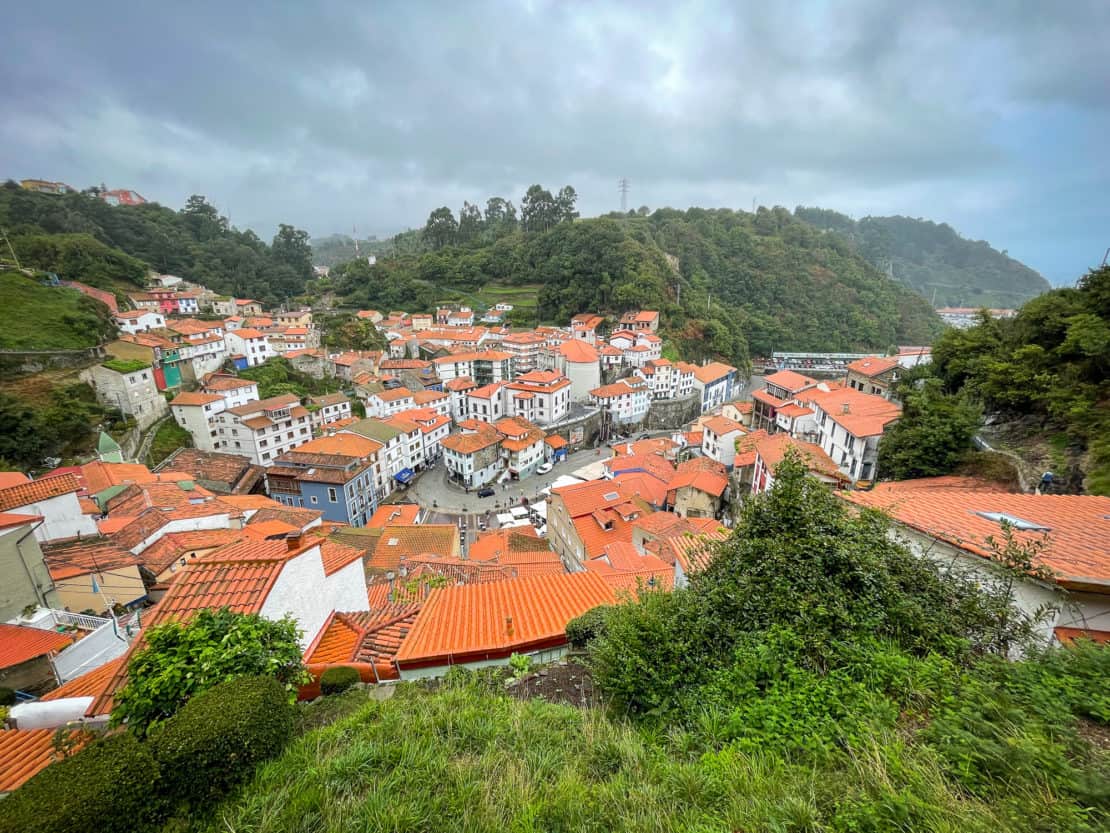
Cudillero: the rainbow fishing town
Allegedly founded by the Vikings, the cute and curious town of Cudillero reaches from the sea up along the mountains in a terracotta wave of tumbling, characteristic houses. The word cudillero means “elbow” and once you’ve climbed to the main viewpoint and gazed back down at the time, you can see why. In the peak season, Cudillero is one of the most popular tourist spots. But even in the early days of September, the crowds subside and you’ll have the place to yourself. Keep an ear out for the local language pixueto and look for the local gems, the quiastolita. These natural stones show the shape of the Celtic cross when they’re sliced in two.
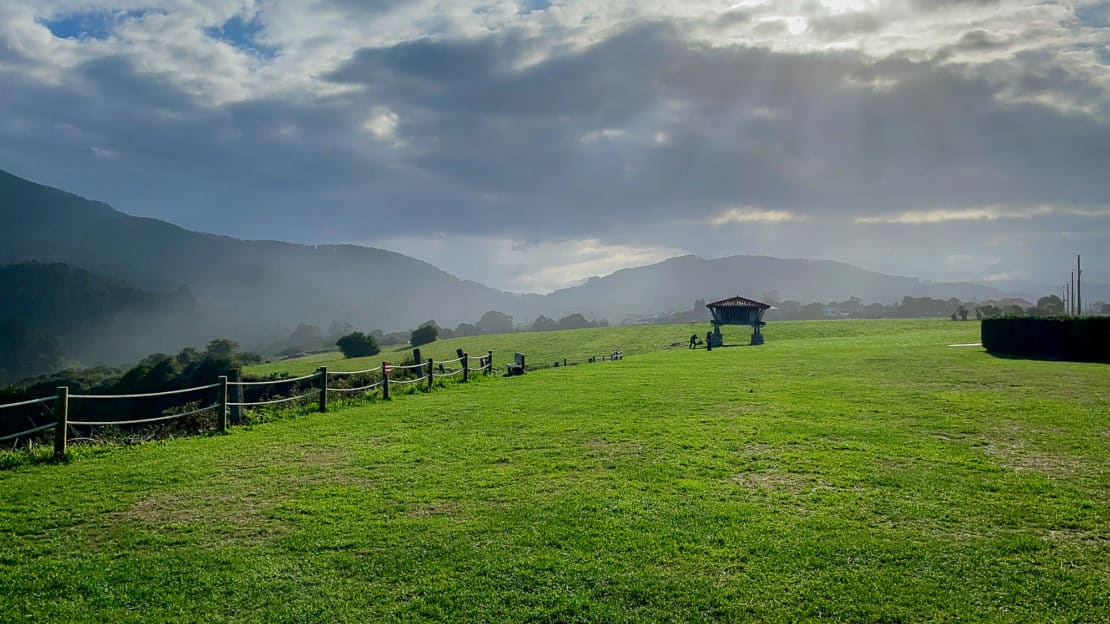
Cadavedo, Valdés
The next stop is in this small village in Valdés, which in 1954 was awarded the title of “Most Beautiful People of Asturias” and in 2022 the “Exemplary village of the Princess of Asturias Awards”. Cadavedo is famous for its many hórreos, some rustic granaries specific to Asturias, and its Indian architecture.
Its stunning Ermita de la Regalina is also a main attraction. This church clings to a grassy headland surrounded only by the beauty of the mountains and the sandy beaches that slide into the sea.
In Cadavedo, you have the chance to meet those who take the famous El Camino de Santiago (also known as the way of St James) going from San Sebastian to Santiago de Compostela.
Lunch at El Casino
Rest your feet and restock on energy at one of the local restaurants in the village. El Casino is one of the most popular, with a nice terrace right on the grass and a friendly, chatty atmosphere. You shouldn’t expect something fancy, but the food is good, and their ice cream is definitely worth trying.

Cangas del Narcea
As the end of the first day, head to Cangas del Narcea for dinner and a walk around one of the richest wineries in Asturias. This area is fascinating with its picturesque old town and biosphere reserve that offers a wide range of trails through the heart of the forest.
But the real highlight is the Parador de Corias, a hotel housed in an 11th-century building, the former Benedictine Monastery of St. John the Baptist of Corias. The vineyards surround the hotel, giving it a very romantic vibe and a walk between the rows of grapes in the gentle light of sunset will soothe even the most jaded of travellers. Plus, you can finish with a glass of wine from one of the best wine regions in the country.
Dinner at Parador de Corias
It’s difficult to find another restaurant that can beat dining inside an old monastery, so don’t even bother. Enjoy dining at your hotel this evening. As expected, since this is a luxury hotel, the food and services are nothing but exceptional. The Parador also focuses on traditional, regional dishes so expect to taste the hearty stews of caldareta and fadeba, with requeson yoghurt mand honey as dessert.
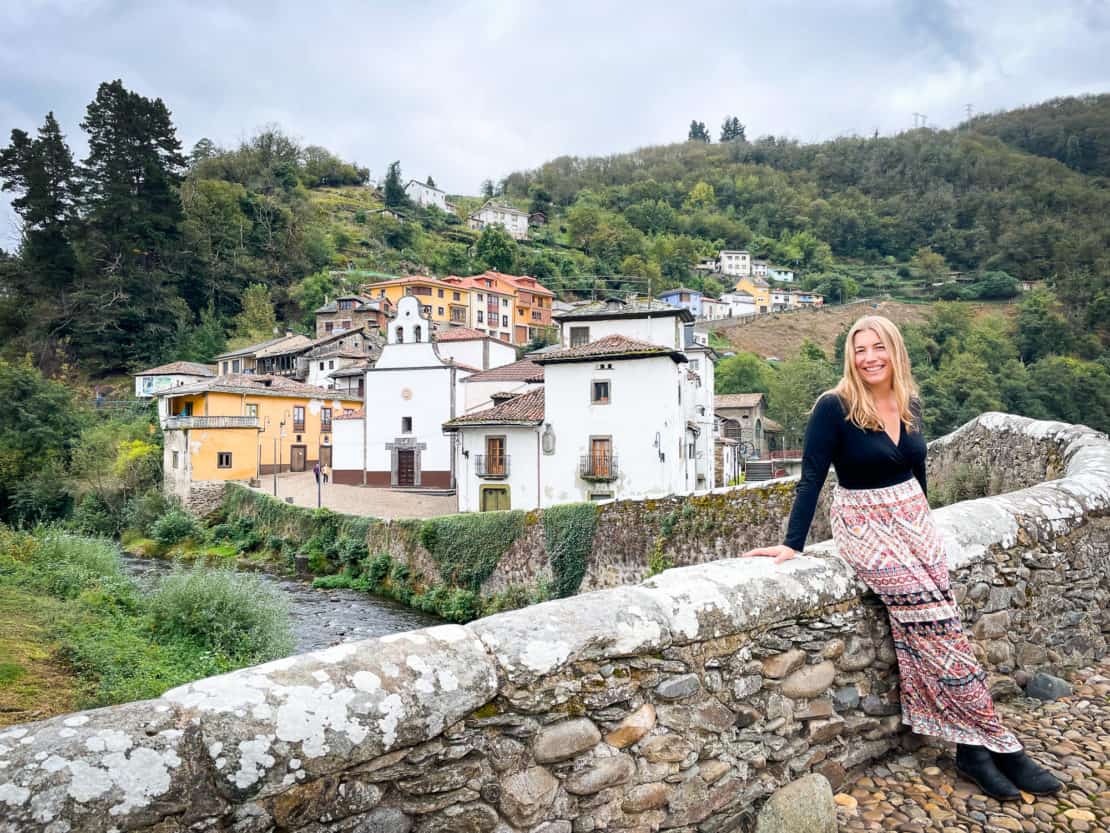
Day 3: Cangas del Narcea – Oviedo
Lace up those boots again as your itinerary takes you through one of the most spectacular nature reserves in Spain and leaves you in a thermal springs spa.
Altu del Campillo
The first stop is at the Altu del Campillo viewpoint, which is one of the best places to see the valley of Degaña and its deep green and blue landscape. The Asturias road trip itinerary continues to the viewpoint of Fonduveigas, where if you’re incredibly lucky, you can spot some brown bears. Other viewpoints are just a 10-minute drive from each other, so stop for more amazing views until you reach the entrance to the national park reserve.
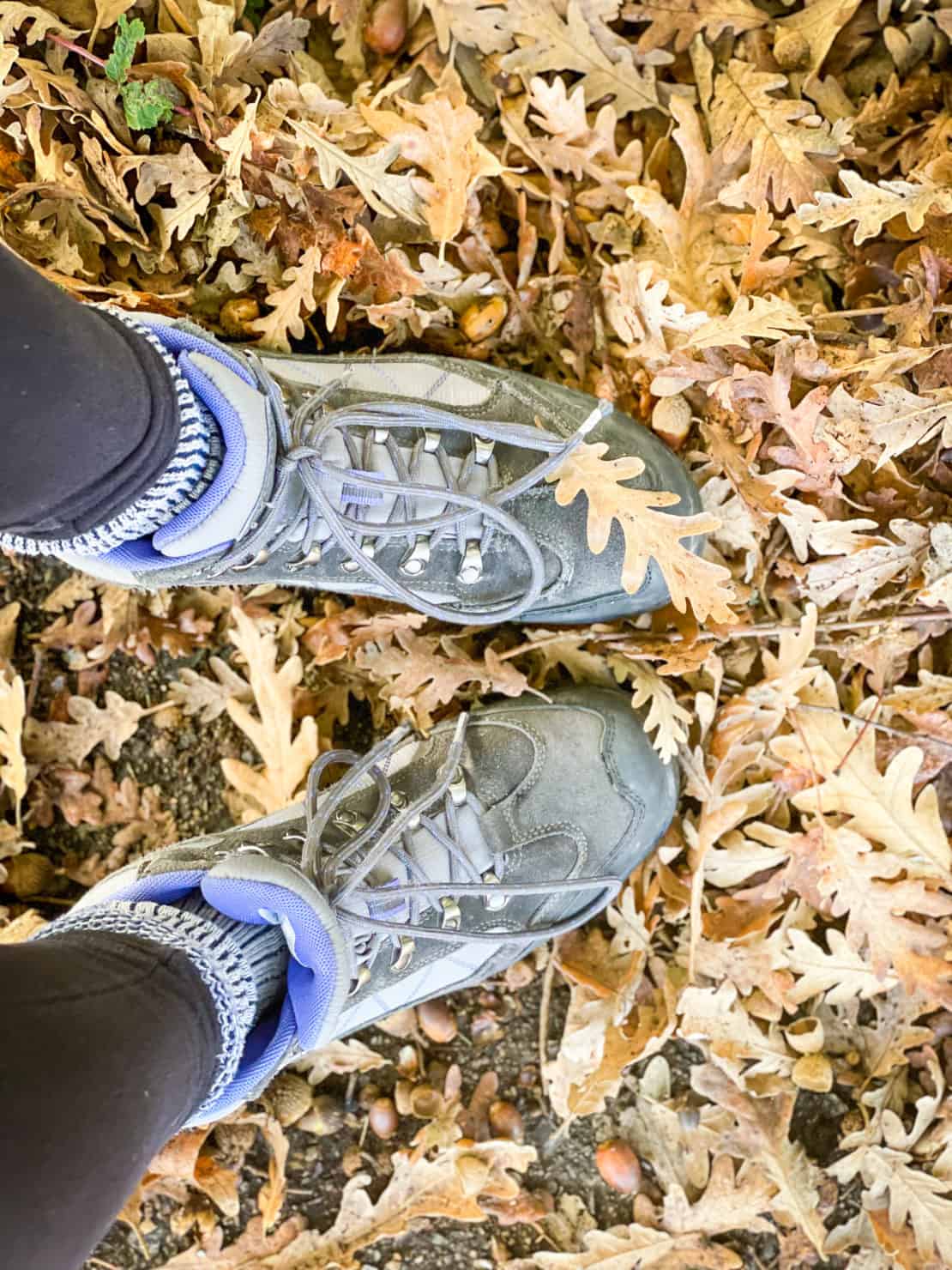
Moal – Tablizas through the Muniellos Biosphere Reserve
Moal is the entry point to the Integral Natural Reserve of Muniellos (Biosphere Reserve) that takes you along the Tablizas river to the Muniellos Visitor’s Reception Center in Tablizas. This is a relaxing walk through a chestnut wood where you will find the traditional “corripas” where chestnuts are gathered and left until they become easier to open.
To enter the reserve, you will need a permit, so plan ahead if you’re keen to go hiking here.
Oviedo
For a break from the green side of spain, head out of the wildness and straight into one of the most cosmopolitan towns in the area. Oviedo is not the typical sleep fishing village or former industrial town that makes up the landscape of Asturias. Instead, it’s a popular destination for those interested in history, shopping, and trying food at restaurants with several Michelin stars.
Itself a UNESCO World heritage Site, this beautiful city has a university, a grand cathedral and a series of places and temples dating back to the 8th and 10th centuries. Take a break in one of the many squares around the town and sip some local Asturian cider. Pair it with some Vidiago or Cabrales cheese, almond cake, and ore frixuelos.
Oviedo can get pretty crowded during the high season, as it’s a useful point on many routes which cross Asturias and Galicia. It’s the main base for the Picos de Europa National Park and Cangas de Onís and a key location on several Camino de Santiago pilgrimage trails. So, in short, book ahead.
Where to Stay near Oviedo
Head to the Hotel Las Caldas Villa Termal, a sprawling complex with a thermal spa and spacious restaurant based on the Hall of Mirrors at the Palace of Versailles.
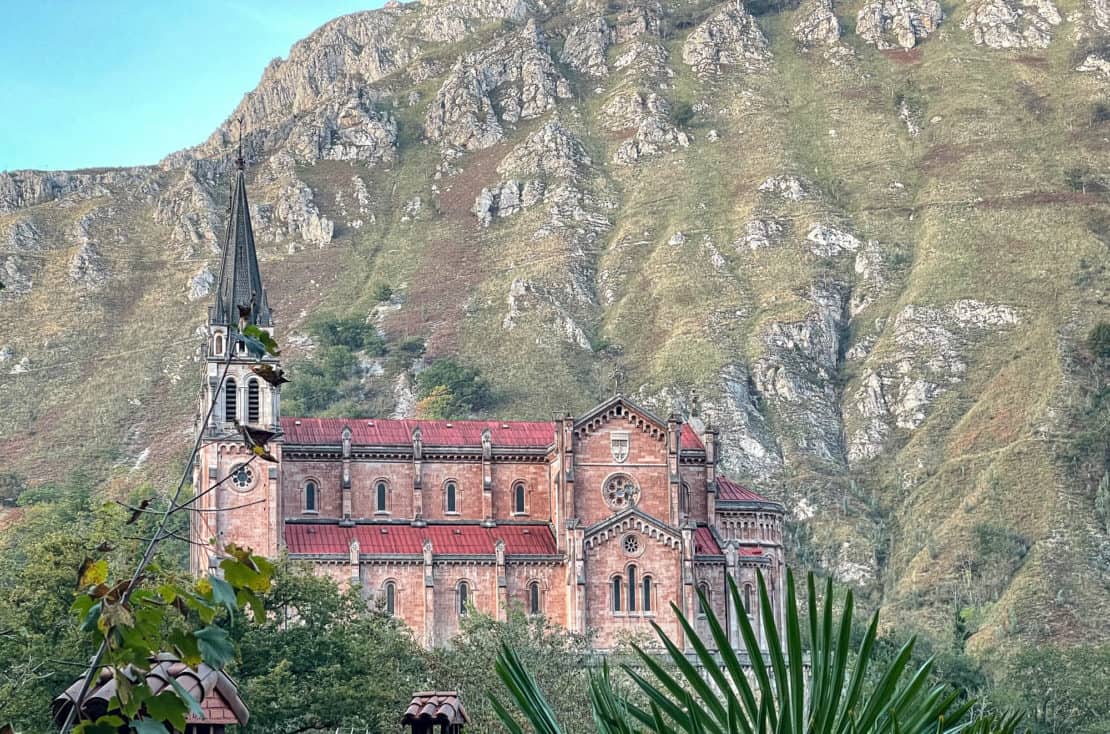
Day 4: Picos de Europa, Covadonga and Cangas de Onís
It’s time for the big hitters: the Picos de Europa National Park, the birthplace of modern Spain and the Celtic cross that simply is the symbol of Asturias.
Mirador de San Roque, Lastres
The first stop on today’s itinerary is in Lastres, a charming fishing town with narrow cobbled stones and houses situated so close to each other that it is almost impossible for the beams of the Bay of Biscay to invade them. The Mirador de San Roque in Lastres offers a dazzling view over the city and the sea, opening your appetite for more natural beauties. And worry not, they are on their way.
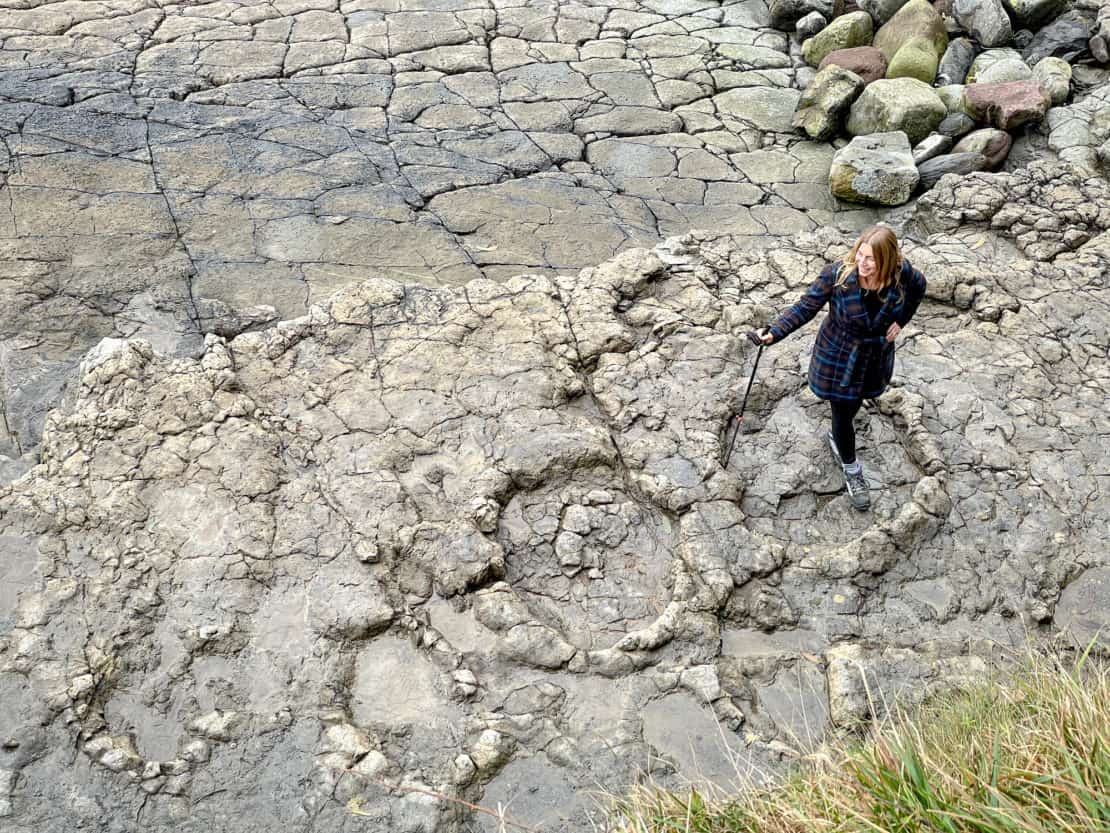
Stand in Dinosaur Footprints at La Griega Beach
As if the beaches weren’t impressive enough, La Griega goes one step further by providing real, actual dinosaur footprints pressed into the rock. Stand in the imprints and get a sense of just how huge these creatures used to be.
Mirador del Fitu, Colunga
At 1,100 metres above sea level, Mirador del Fitu offers a 360-degree view that will stop you in your tracks. From here, you can see the Ponga Natural Park and the Sueve Nature Reserve, along with the mighty Picos de Europa National Park. And if you look to the south, Cangas de Onis and Covadonga appear on the horizon.
Mirador del Fitu to the Majada de Bustacu Route
This 3-kilometre trail takes you through a small wood until you reach the Majada de Bustacu high mountain meadow. I know I keep writing it but spectacular views await here, with the Cantabrian Sea shimmering on one side and the Picos de Europa on the other. This is the best place to spot the lovely Asturcones horses, one of the purest breeds of ponies in the world.
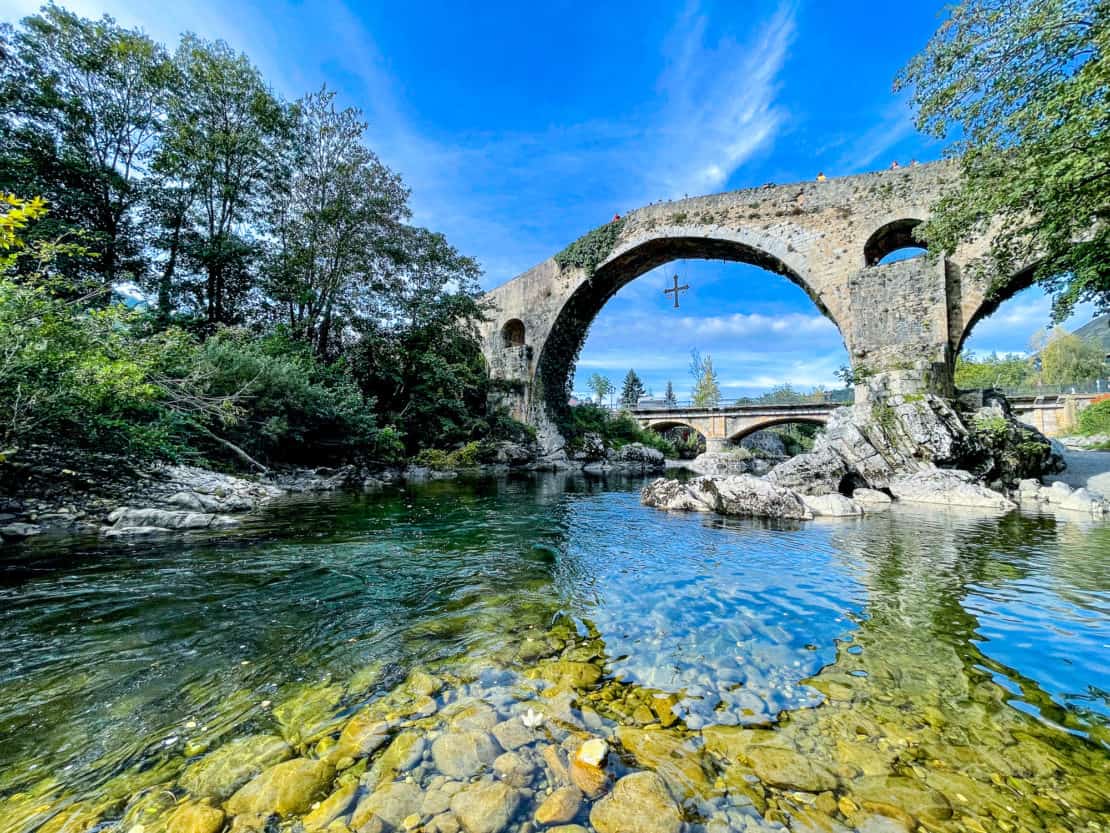
Cangas de Onís: the famous spot in Asturias
This town is famous for its Roman Bridge with a reproduction of the Victoria Cross that hangs from its centre. Stop for lunch at Vega Redonda cider house, where you can try Asturias’ home cider brand, poured from a great height and drunk in a single slurp.
Lugos of Covadonga (Enol and Ercina)
The day is still young, so your trip continues to visit some of the highest lakes in Asturias. Situated in the heart of the Picos de Europa Natural Park at an altitude of over 1,000 metres, Enol and Ercina are accessible through an easy climb, and theirstill waters and stunning surroundings attract thousands of tourists every year.
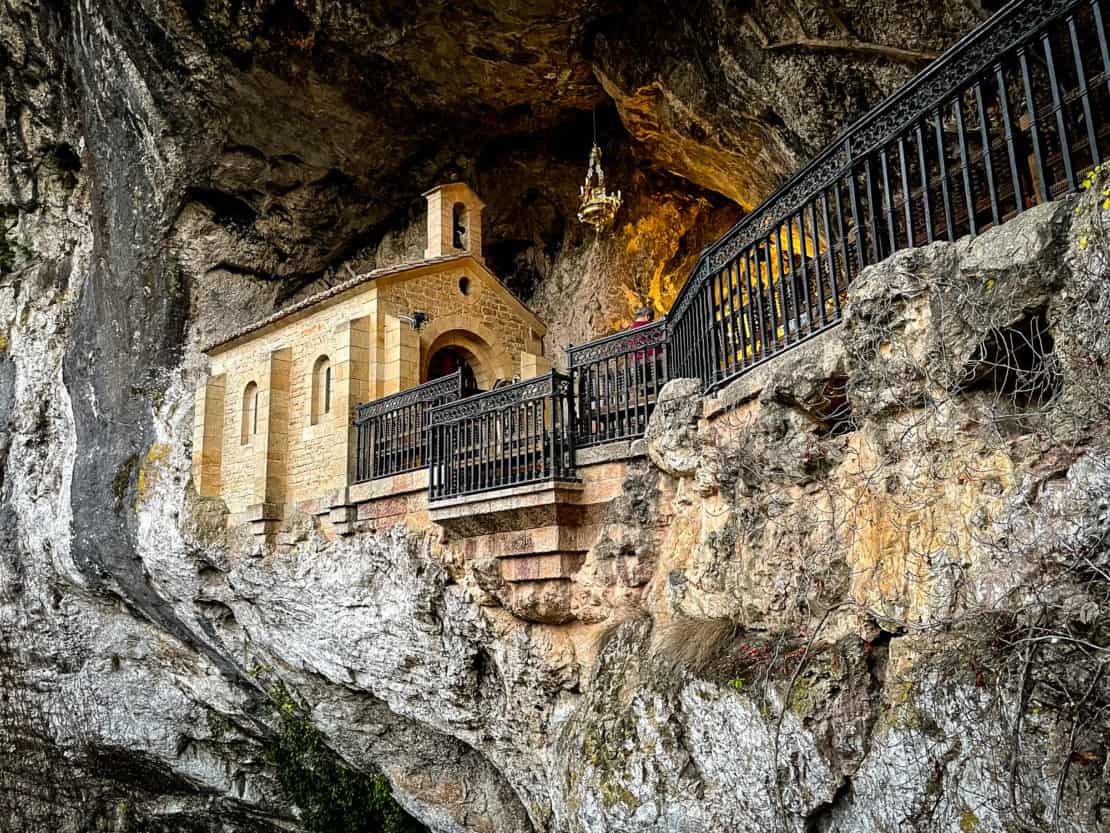
The Royal Site of Covadonga
Do not miss the Royal Site of Covadonga to learn one of the most important stories about the foundation of Asturias. In this place, it is said that King Pelayo defeated the Moors and started his campaign of recovering the Iberian Peninsula from the “barbarians,” aka the Moors.
Enter the waterfall-hidden cave to find the sanctuary of “La Santina” and take a few moments to meditate and embrace this unique Spanish monument of spirituality.
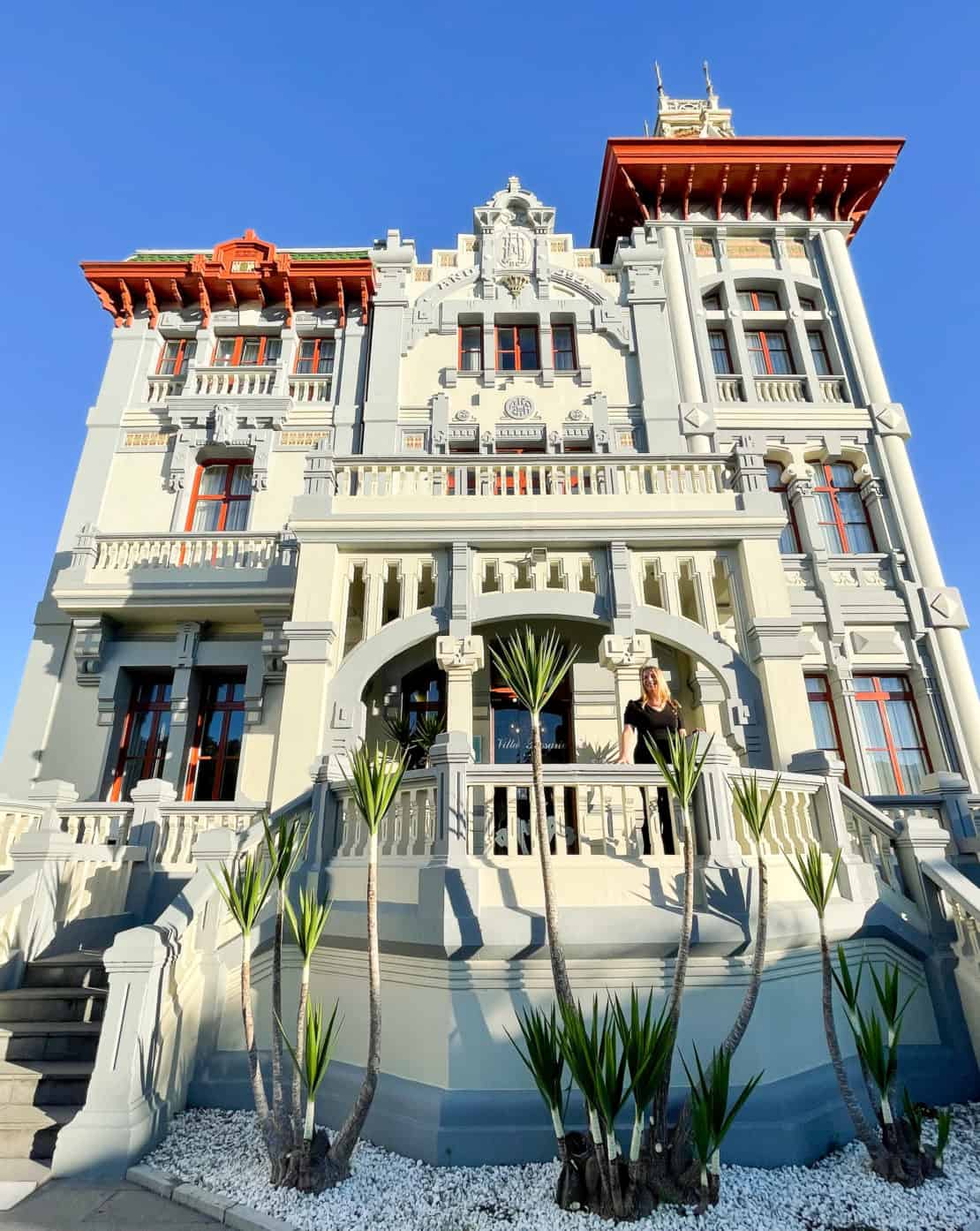
Ribadesella
The last stop is the seaside town of Ribadesella, famous for its prehistoric Cave of Tito Bustillo, which was inhabited by humans before the year 10,000 BC.
Where to stay in Ribadesella
Hotel Villa Rosario is a fantastic pick for accommodation. A sumptuous villa with amazing views of the sea, luxurious rooms, and excellent breakfast options, it forms one of the famous Indiana houses that line the seafront.
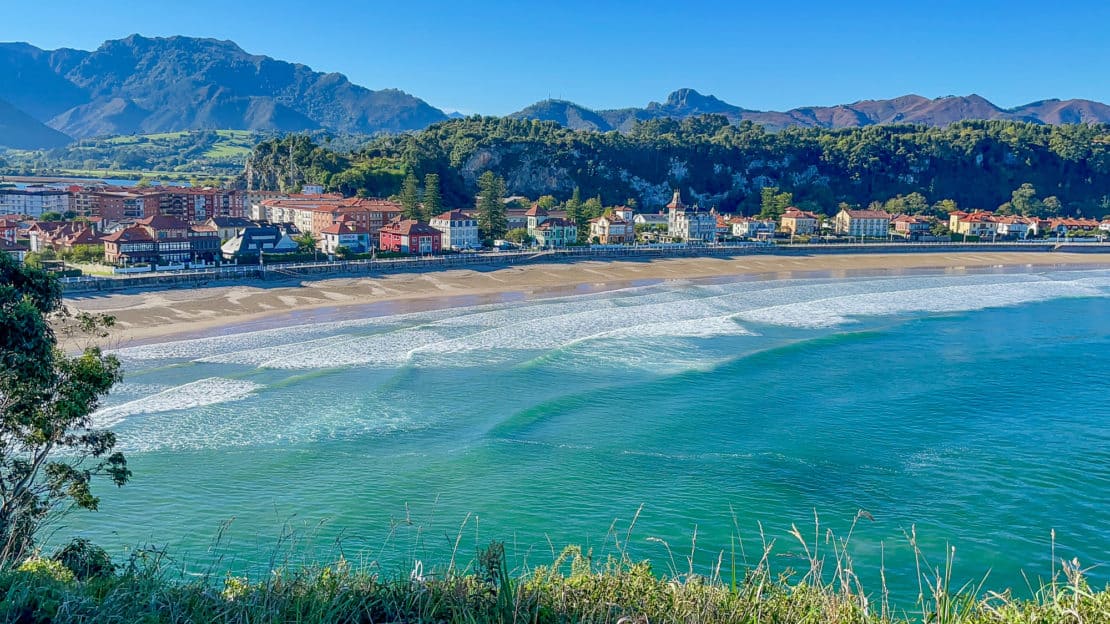
Day 5: Ribadesella – Cabo Peñas, Gozón – Asturias Airport
The last day of your Asturias road trip still has plenty going on. Today, stroll around the town of Ribadesella and hike up to the viewpoint. Then discover the Cabo Peñas before heading back to the airport.
Ribadesella
Head to the cave to see the marks made by some of the earliest humans to live in this region. Take a walk on the Santa Marina seafront or stop for a coffee in one of the many restaurants. Finally, stretch your legs by hiking up to the viewpoint that shows the unusual outline of Ribadesella in all her glory.
Cabo Peñas, Gozón
On your way to the airport, there’s the last stop and an amazing one at that. Drive to the Cabo Peñas Protected Area to visit the lighthouse there. It’s been in operation since 1852, guiding sailors across the treacherous yet beautiful Asturian coast.
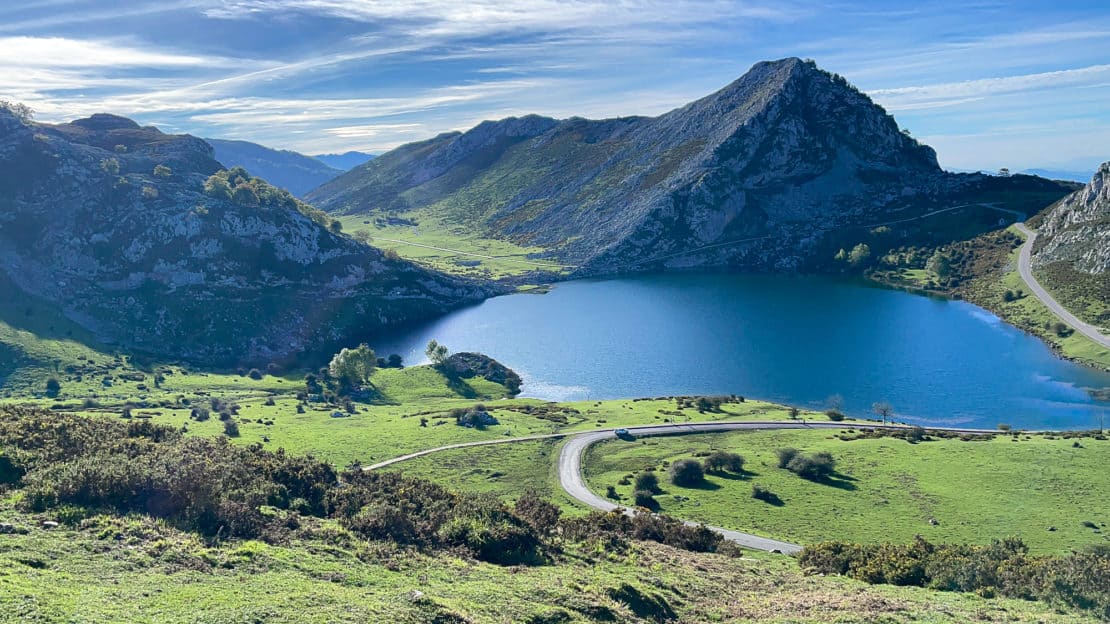
When to Visit Asturias
The best time of the year for an Asturias road trip is between June and September. Compared to other regions of Spain, which become scorching hot during this period, Asturias enjoys comfortable temperatures that tend to stay below 30 degrees Celsius. The weather is typically sunny with sporadic rain, so prepare for everything and always pack a waterproof.
During the winter, the cliffs of Asturias are covered in snow, and the region becomes home to ski lovers. Christmas fairs are held in every city, and New Year’s Eve is celebrated with sumptuous parties.
In October, many villages hold hazelnut festivals, whilst bigger cities like Gijon and Aviles are famous for their summer music festivals.
Bookmark this Asturias Road Trip Itinerary
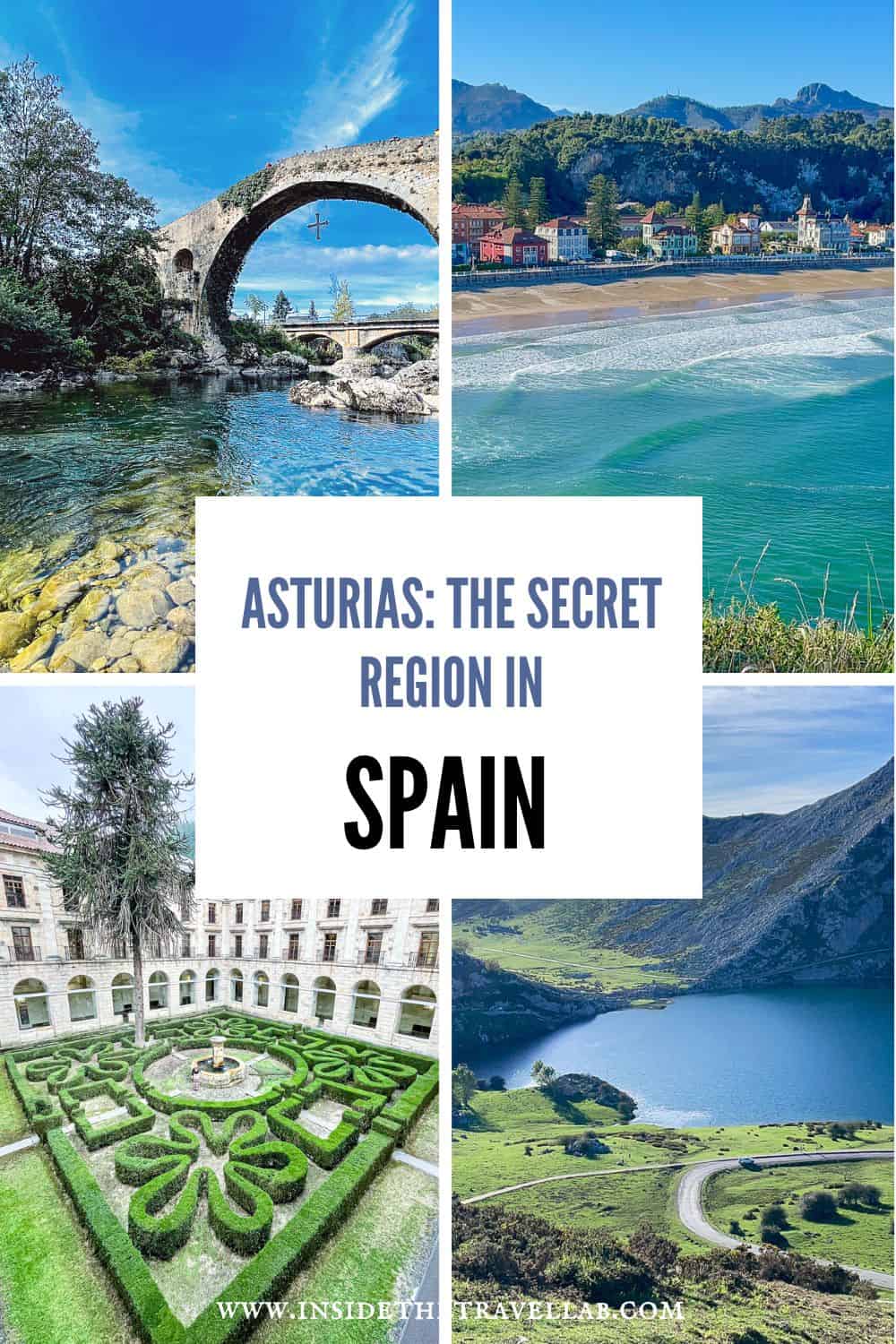
Why not bookmark this Asturias itinerary on Pinterest for later...
More Travel Articles about Spain
- The Spain quiz for curious people
- 49 Interesting facts about Spain
- Spain in one week: an itinerary for your first time in Spain
- How to plan a road trip through Andalucia
- Galicia: how to travel through the salty north of Spain
- The best road trips in Spain
- How to spend a summer in Spain
- Bilbao or San Sebastian for your next trip?

